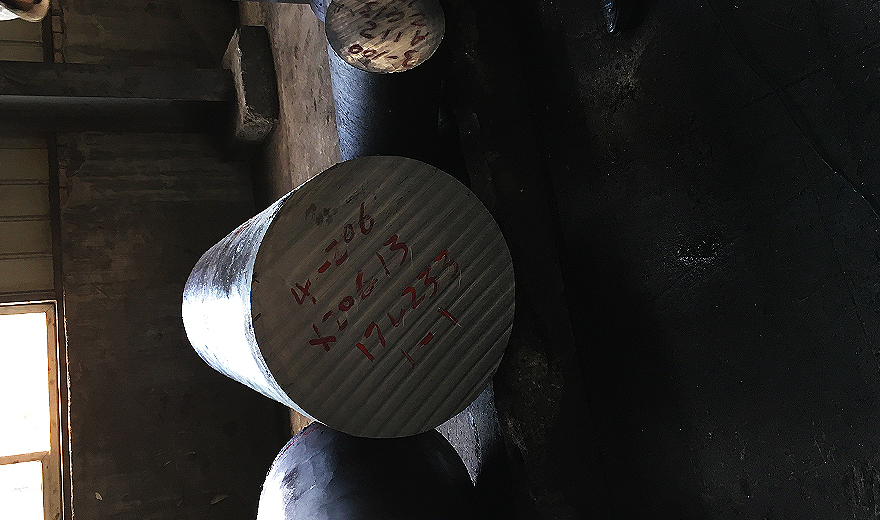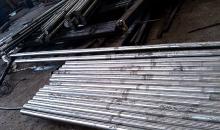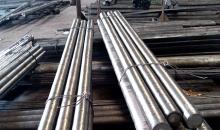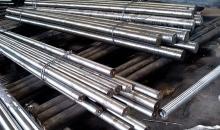| USA | German | Japan | British |
|---|---|---|---|
| ASTM A681 | DIN EN ISO 4957 | JIS G4404 | BS 4659 |
| L6/T61206 | 1.2714/55NiCrMoV7 | SKT4 | BH224/5 |
Physical Properties of 1.2714(L6, 55NiCrMoV7, SKT4,BH224-5) Hot-Work Mould Steel
- Modulus of elasticity [103 x N/mm2]: 215
- Density [g/cm3]: 7.84
- Thermal conductivity [W/m.K]: 36.0
- Electric resistivity [Ohm mm2/m]: 0.30
- Specific heat capacity[J/g.K]: 0.46
Mechanical Properties of 1.2714(L6, 55NiCrMoV7, SKT4,BH224-5) Hot-Work Mould Steel
| Properties | Metric | Imperial |
| Poisson’s ratio | 0.27- 0.30 | 0.27- 0.30 |
| Elastic modulus | 190-210 GPa | 27557-30457 ksi |
Forging of 1.2714(L6, 55NiCrMoV7, SKT4,BH224-5) Hot-Work Mould Steel
Forge at 1079°C (1975 F) down to 871°C (1600 F). Do not forge below 843°C (1550 F).
1.2714(L6, 55NiCrMoV7, SKT4,BH224-5) Hot-Work Mould Steel Heat Treatment
Hardening
Preheating: Heat 1.2714(L6, 55NiCrMoV7, SKT4,BH224-5) Hot-Work Mould Steel at a rate not exceeding 204°C (400°F) per hour (222°C per hour) to 621-677°C (1150-1250°F) and equalize. Soak for 30 minutes for the first inch (25.4 mm) of thickness, plus 15 minutes for each additional inch (25.4 mm).
Quenching
Quench 1.2714(L6, 55NiCrMoV7, SKT4,BH224-5) Hot-Work Mould Steel in oil to 66-51°C (150-125°F).
Tempering
Temper 1.2714(L6, 55NiCrMoV7, SKT4,BH224-5) Hot-Work Mould Steel immediately after quenching. Hold at temperature for 1 hour per inch (25.4 mm) of thickness when tempering at 204°C (400°F), 4 hours minimum, then air cool to ambient temperature.
However, where increased toughness is desired, at a sacrifice of some hardness, higher tempering temperatures are often used.
1.2714(L6, 55NiCrMoV7, SKT4,BH224-5) Hot-Work Mould Steel does not become brittle, as many other die steels do, when tempered in the range of 232°C to 426°C (450 to 800°F).
To minimize the possibility of cracking, the steel should be tempered immediately after hardening and should be heated slowly to the desired tempering temperature.
Annealing of 1.2714(L6, 55NiCrMoV7, SKT4,BH224-5) Hot-Work Mould Steel
Heat to 760°C (1400°F) and hold one hour per inch of maximum thickness. Then cool slowly with the furnace at a rate not exceeding 28°C per hour(50°F per hour) to 538°C (1000°F). Continue cooling to ambient temperature in the furnace or in air.
For improved machinability, hold at 760°C (1400°F) for 1 hour per inch (25.4mm) of maximum thickness; 2 hours minimum. Then cool slowly with the furnace cool from 677°C (1250°F) to 760°C (1400°F), hold for 8 hours, then air cool to ambient temperature.
Because of its air-hardening ability, 1.2714(L6, 55NiCrMoV7, SKT4,BH224-5) Hot-Work Mould Steel should not be normalized.
7. Machinability of 1.2714(L6, 55NiCrMoV7, SKT4,BH224-5) Hot-Work Mould Steel
Machinability of tool steel L6 is very good. It rates 90% of the machinability of the W-group water hardening low alloy steels rated 100% as a baseline.
8. Applications of 1.2714(L6, 55NiCrMoV7, SKT4,BH224-5) Hot-Work Mould Steel
1.2714(L6, 55NiCrMoV7, SKT4,BH224-5) Hot-Work Mould Steel is for general purpose tools and dies where greater toughness is required, but with some sacrifice of abrasion-resistance.
Typically used below applications:
- spindles,
- forming rolls,
- punches,
- blanking and forming dies,
- trimmer dies,
- clutch parts,
- pawls,
- bearings,
- chucks parts,
- rollers,
- knuckle pins,
- clutch pins,
- shear blades
Supply 1.2714(L6, 55NiCrMoV7, SKT4,BH224-5) Hot-Work Mould Steel




